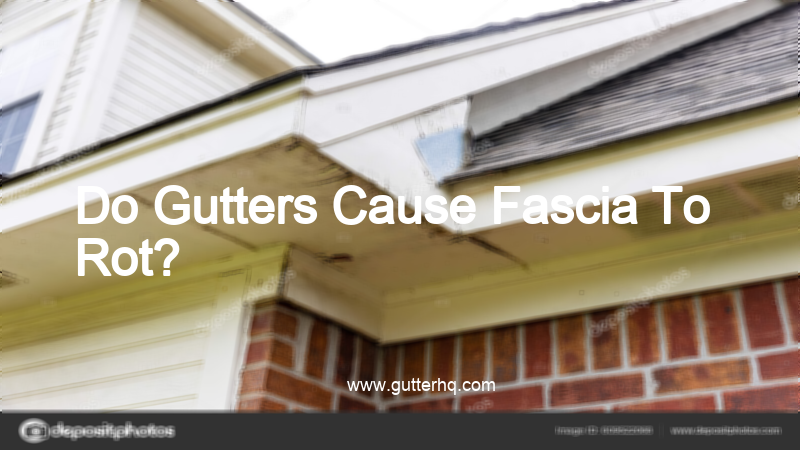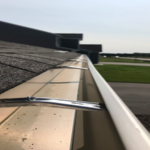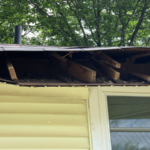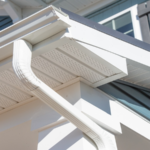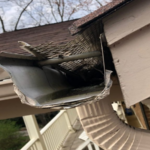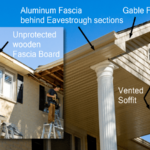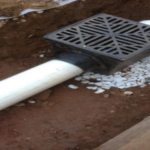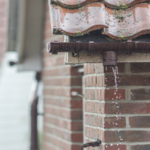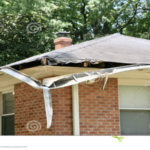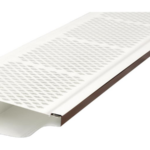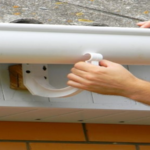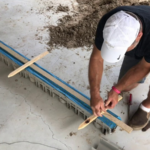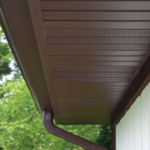The simple answer is yes, gutters can cause fascia to rot. The water that runs off your roof during a rainstorm can seep into the fascia board, which is the board that the gutters are attached to. This can cause the fascia board to warp and rot over time. If you notice that your fascia board is beginning to rot, you should have it replaced as soon as possible.
Do gutters ruin fascia?
Gutters are designed to protect your home from water damage by channeling water away from the foundation. However, if they are not properly installed or maintained, they can actually cause damage to the fascia, the horizontal board that runs along the edge of your roof. Improperly installed gutters can cause water to pool at the base of the fascia, which can lead to wood rot and insect infestation. Additionally, clogged gutters can cause water to back up and overflow, which can damage the fascia as well as the siding and foundation of your home. To avoid these problems, it is important to have your gutters installed by a professional and to keep them clean and in good repair.
How do I stop my fascia from rotting?
- Remove any loose or rotting fascia boards. Use a pry bar or crowbar to carefully remove the boards, being careful not to damage the underlying structure.
- Treat the affected area with a fungicide. This will help kill any remaining mold or mildew and prevent further rot.
- Repair any damage to the underlying structure. This may involve replacing damaged plywood or framing members.
- Install new fascia boards. Use treated lumber or composite material to resist rot. Be sure to install the boards securely, using screws or nails.
How do you know if your fascia is rotten?
If your fascia is rotten, you may notice that your home is beginning to sag or that there are cracks in your walls or ceilings. If you suspect that your fascia is rotten, you should have a professional inspect it as soon as possible. Rotten fascia can lead to serious structural problems, so it is important to catch it early.
There are a few ways that you can tell if your fascia is rotten. First, take a look at the wood. If it is discolored or warped, it may be rotted. Second, try to push on the wood. If it feels spongy or crumbles easily, it is probably rotted. Finally, look for signs of insects or mold. If you see any of these signs, it is time to call a professional.
Rotten fascia is a serious problem that can lead to major structural damage. If you think that your fascia is rotten, don’t hesitate to call a professional for an inspection. Catching the problem early is the best way to ensure that your home is safe and sound.
What causes soffits to rot?
There are many reasons why soffits might rot, but the most common cause is moisture. Moisture can come from rain, snow, or even humidity, and it can seep into the soffit through cracks or holes. Once the moisture gets inside, it can start to break down the wood or other materials that make up the soffit. Over time, this can lead to rot.
Should fascia be replaced with gutters?
The answer to this question is a resounding yes! Fascia should be replaced with gutters for a number of reasons. First, gutters are much more effective at redirecting water away from your home. This is important because water can cause serious damage to your home’s foundation if it is not redirected properly. Second, gutters are much easier to clean than fascia. This is because you can simply hose them down or use a power washer to clean them, whereas fascia requires you to get up on a ladder and clean them by hand. Finally, gutters will last much longer than fascia. This is because they are made of more durable materials and are better able to withstand the elements.
Why is my fascia board rotting?
If your fascia board is rotting, it is likely because it is made of wood. Wood is susceptible to rot and decay when it is exposed to moisture. If your fascia board is rotting, you will need to replace it.
How often should fascia be replaced?
There is no definitive answer to this question as it depends on a number of factors, including the type of fascia you have, the environment it is in, and how much wear and tear it experiences. However, as a general rule, it is recommended that fascia be replaced every 3-5 years.
Can you put new fascia over old fascia?
The fascia is the board that sits behind the gutter and is what the gutter is attached to. If your old fascia is in good condition and the gutter is attached to it securely, then you can put new fascia over the old. This will save you time and money as you won’t have to remove the old fascia or replace it.
What damage can full gutters cause?
If your gutters are full, they can cause damage to your roof and your home’s foundation. When gutters are full, the water can’t flow properly and will back up. This can cause the gutters to pull away from your roof and allow water to seep under the shingles and into your home. The water can also damage your home’s foundation by causing cracks and erosion.
Last Word
There is no simple answer to this question as there are many factors that can contribute to fascia rot. However, it is possible that gutters could be one contributing factor, especially if they are not properly maintained or installed. If you are concerned about your fascia rotting, it is best to consult with a professional to assess the situation and make recommendations for repairs or replacement.
